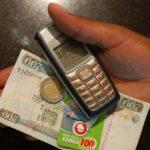TYPES OF PERSONAL LOANS BASED ON COLLATERAL IN PHILIPPINES
Secured personal loans
To get a secured personal loan, you need to put up collateral (property, vehicle, or deposit account) as security for the bank. When the borrower fails to pay it off, the lender can take the collateral to recover the unpaid amount. Because of the lower risk for the bank, secured loans have higher loan amounts and lower interest rates than unsecured loans. In the Philippines, only BDO offers a secured personal loan to overseas Filipino workers, requiring BDO bank account deposits as collateral.
Unsecured personal loans
Also called an unsecured loan, a non-collateral personal loan is issued by a bank or any financial institution without requiring any type of collateral from the borrower. Most personal loans in the Philippines are unsecured or non-collateral loans. With an unsecured loan, you can borrow from Php 10,000 to Php 1 million that is repayable in 12 to 36 months.
Some of the major banks that issue no-collateral personal loans in the country include the following:
- BDO:Employees and self-employed individuals can avail of an unsecured loan from Php 10,000 to Php 1 million at annual interest rates ranging from 25.98% to 26.76%. Unsecured personal loans for OFW borrowers are also available through the bank’s Asenso Kabayan Program.
- BPI: The bank offers loan amounts from Php 20,000 to Php 1 million at 25.03% to 25.74% annual
- EastWest Bank: The bank’s personal loan amount is Php 25,000 to Php 2 million. For existing credit cardholders, the annual interest rates range from 41.62% to 41.94%. The interest rates are higher for non-credit card owners at 46.92% to 53.21%
- Maybank:Maybank’s collateral-free personal loan from Php 50,000 to Php 1 million can be obtained at a 1.3% monthly interest rate.
- Security Bank:The bank lends a minimum of Php 30,000 up to Php 1 million with interest rates starting from 29.48%.
Differences between secured and unsecured personal loans
With an unsecured loan, the risk is higher for the lender, so it typically comes with a lower loanable amount and a higher interest rate. Personal loans without collateral are guaranteed by a borrower’s creditworthiness instead of collateral. So if your credit standing is good, you will have a greater chance of approval than someone with a bad credit history.
When you apply for an unsecured loan, you will need to prove to the lender that you have a stable income and can make monthly repayments on your loan. Banks ask personal applicants to submit proof of income to determine their capacity to repay a loan. So you need to prepare supporting documents such as income tax returns, pay slips, and certificate of employment to the bank to get approved for an unsecured loan.
Pros and cons of secured loans and unsecured loans
Secured loans
Pros
- Lower interest rates and fees than those of unsecured loans
- Simpler to apply for and easier to get approval
- Slightly relaxed eligibility requirements than those of unsecured loans
- Ideal for borrowers with no or poor credit records
Cons
- Risk of losing an asset if you fail to pay off your loan
Unsecured loans
Pros
- Lower interest rates than those of credit cards
- Good option for borrowers who do not have any asset
- Many available loans to choose from
Cons
- More difficult to qualify for and more tedious paperwork
- Higher personal loan interest rates and fees
- Expensive late payment penalties

